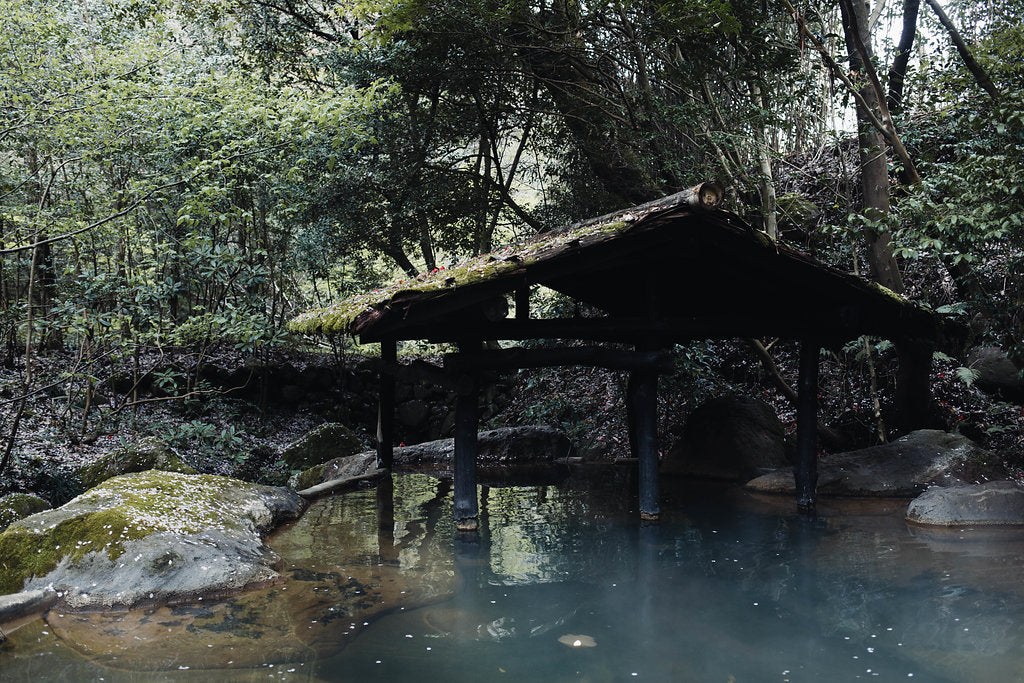A broken jug, a sake bar and a life lesson

As I stood in the rain, staring down at the broken porcelain jug shattered in pieces on the pavement, I thought, I know there’s a lesson is this, but right now I’m not in the mood to learn it.
At that moment, my hair dangling in wet ropes around my face, my paper shopping bags in soggy tatters, I didn’t feel very zen. It was late afternoon in rural Japan and I’d missed the last bus to my ryokan (a traditional Japanese inn). As Murphy’s Law goes, it was a spring holiday in Oita and every hire car company was fully booked. Staring hopelessly at the door of the last rental shop I’d just exited, I tried to figure out how to make the 47km journey without a car. When the paper bag, in perfect harmony with my emotions, fell apart.
The day before, I was in sunny Kyoto with my travel companions, three of my dear friends. We wandered through ancient laneways lined with traditional wooden houses, discovering hidden gems at every turn. As a first time visitor, I was in awe of the architecture, the earthy smells of the Tatami straw mats and the custom of removing my shoes when entering the tiny shopfronts. I stumbled across a gallery of fine homewares, each piece handcrafted by a local artisan. One of a kind brass spoons for tea leaves, carved wooden plates and ceramic matcha bowls. I was instantly drawn to the chalky white porcelain jug for its simplicity. Feeling delighted with my find, I mused as the gallery keeper thoughtfully wrapped it in tissue paper and washi tape.
Looking down at the fragments of my precious jug, I couldn’t bring myself to throw it away. Feeling frustrated at the money I’d spent and now wasted. Despairing that I’d missed the bus. Stressed at the thought of having to find a place to stay near the train station last-minute. I crammed the damaged jug in my suitcase and booked a taxi to my accommodation up the mountain. Disillusioned, I tried not to cry again at the sight of the taxi metre racking up thousands of yen for the hour drive.
Arriving at the ryokan was a welcome relief. A hidden retreat nestled amongst the maple trees and built around a natural stone hot spring. Stripping off my clothes and the stress of the day, I sank into the hot water and closed my eyes. My friends and I watched as the gentle breeze carried cherry blossom petals onto the surface of the water, blanketing us in ‘sakura snow’. The ritual of bathing calmed me. After three days in the healing waters of the onsen, I was rejuvenated and back in Kyoto.
A few nights later, the warm glow of the lights inside a tiny sake bar enticed us in. Warmly welcomed by the owner, Masahiko (nicknamed Kon). We perched on one of the few barstools and because we couldn’t read the menu, ordered one of everything and hoped for the best. We marvelled as the chef (Kon's wife) Yaeko, plated up delicacies in the smallest of kitchens.
I adored the handmade sake cups lined up on the bar, turning them around in my hands noting the beauty from the wear-and-tear of years of use. Using our Google translate app we had a bumpy (sometimes amusing and confused) conversation with Kon and Yaeko. We gushed about our observations of Japan. How we’d noticed a subtle sense of harmony that permeates the culture. The thoughtfulness in design and reverence for nature and the seasons. I told them about my pottery studio at home and about breaking my new jug. Kon explained to me that he studies and makes ceramics too. Handing me a delicate cup with golden lines mapped around the surface. He explained, ‘this cup is 200 years old, it broke and I repaired it with kintsugi’.
Kintsugi (金継ぎ) is a traditional Japanese ceramics technique stemming from the 15th century. It means literally, ‘to join with gold’, translated from golden (“kin”) and joinery (“tsugi”). It’s a slow and thoughtful process to repair a broken piece of pottery in this way. It can take up to a month and in that time it allows you to reflect on the breakage, carefully assessing each piece of the puzzle as you put it back together. When it’s complete, the lacquer and gold powder enhances the fragments and makes the damaged pot more precious and valuable than when it was whole.
‘Leave the jug with me’ Kon said, ‘and I’ll repair it for you, but with the condition that you have to come back and pick it up in person’. I left the bar with my belly and heart full and made a promise to return to Kyoto. Two autumns later on a balmy evening, I sat on the same chair at the bar, this time with my husband. Greeted by Kon’s beaming smile he presented me with the jug, now even more beautiful with its golden scars.
There are times when we will fall apart. Little annoyances like that rainy day I missed my bus or huge life hurdles – when I abandoned my career due to stress-induced illness. What matters is how we put ourselves back together. Just like the jug, on the other side of adversity, we’ll be stronger, more interesting and beautiful because of the journey.



